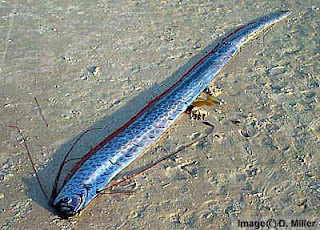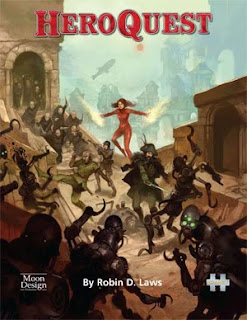Thunder Rebels and Storm Tribe both focussed to a large extent on subcults; the various speciality forms of worship granting unusual magic. In a sense, one could argue that Destor, say, was the default Orlanth cult (at least for warriors), but it didn't truly feel like that - it was more as if one had to pick from a big list of options. Now, I never found that problem, and I quite liked the range of options that were provided, but restoring the subcults to optional niches (as they were back in the old RuneQuest days) is certainly a good deal simpler.
In fact, its not really accurate to say that the subcults of TR and ST have been done away with. A great many of them do survive, albeit somewhat downplayed in importance. Orlanth, for example, has eleven , including Hedkoranth, Destor, Helamakt, and so on. It would be relatively easy to add those that are "missing" (such as Yavor or Vanganth, for example), assuming you have access to the older sources.
 There have, on the other hand, been some demotions. The powers of some of the old subcults are relegated to mere feats of the 'default' version of the deity, although, again, its fairly easy to build them back up if one is so inclined. Vinga the warrior-ess and Heler the rain god, both full deities in Storm Tribe, are here demoted to mere subcults of Orlanth. That isn't necessarily so bad, though, since Vinga was always supposed to be able to do anything Orlanth could do, so she might as well be merged in rules terms as well. Heler is perhaps a little more disappointing, but when you have space for only nine cults, its a perfectly reasonable one to leave out. (Incidentally, the others from ST who fail to make the grade are Odayla, who to my mind isn't as interesting as Yinkin, and Eurmal, who isn't very suitable for PCs anyway).
There have, on the other hand, been some demotions. The powers of some of the old subcults are relegated to mere feats of the 'default' version of the deity, although, again, its fairly easy to build them back up if one is so inclined. Vinga the warrior-ess and Heler the rain god, both full deities in Storm Tribe, are here demoted to mere subcults of Orlanth. That isn't necessarily so bad, though, since Vinga was always supposed to be able to do anything Orlanth could do, so she might as well be merged in rules terms as well. Heler is perhaps a little more disappointing, but when you have space for only nine cults, its a perfectly reasonable one to leave out. (Incidentally, the others from ST who fail to make the grade are Odayla, who to my mind isn't as interesting as Yinkin, and Eurmal, who isn't very suitable for PCs anyway).Having said that, cults are fairly central to play in the Dragon Pass setting, and, given the size of the book, I would have liked to have seen more. Expecting minor cults to get the full 5+ pages devoted to each those that made it in might, perhaps be a bit much... but one or two pages each would have sufficed to at least give us the basics. As it is, this is an area where having Storm Tribe available is going to be helpful - at least until a companion volume comes out with the lesser cults properly described.
The one cult in KoH that I felt unhappy with was Humakt, god of death. There seems to have been a general move since RuneQuest days to make the Humakti embody death to such an extent that they cease (at least from my perspective) to be truly interesting or really playable. Storm Tribe, while subscribing to this view, at least seemed to recognise what a big problem it could create in game. The "re-sheathing" ceremony mentioned in that book was a decent stab at keeping Humakti playable, and was, as a result, to my mind one of the most crucial points about the cult in that book.
Sadly, KoH seems to ignore that altogether. Technically, it doesn't contradict it, but that's not much of an excuse, when the reader will be clearly left with the impression that all Humakti - and not just, say, the Devotees - are somehow the "living death". It's a disappointing omission, and, perhaps, quite a surprising one.
While I'm on the subject, the section on Humakti gifts and geases feels weak and woolly by comparison with all previous versions - some more specific examples would have been very helpful here.
Still, other than Humakt, the cults are good. And they're by no means the end of the cool material in the book. There is a lot of good advice on heroquesting, expanding and improving on that in earlier books. Heortling culture is well described, bringing them as a people to life, helped by the high quality illustrations throughout. Dragon Pass itself is described, with the aid of several glossy full colour maps.
These maps in particular, are a part of the reason why I say that the book is worth the price. How often do you see full colour maps in RPG products that aren't produced by giants like Hasbro/WotC? And these are nice looking maps at that, and detailed enough to be really helpful in play. There are even black & white plans of the cities of Sartar, something that has generally been lacking in previous publications. There's also a detailed description of the Colymar tribe, complete with its own colour map.
The book has information about the Lunars, and about the various other cultures that neighbour the Heortling barbarians. Rightly, the focus is on the Heortlings themselves, rather than describing the Lunar Army in detail, or describing the cults of the Grazelanders. But even so, there is enough information here to play them as foes.
All in all, the sheer density of information in the book may seem a little overwhelming to a newcomer, but it rewards the effort with a wonderfully fleshed-out look at a culture different from that in so many other RPGs, and very much retaining the "feel" that Glorantha has had for so long. Yes, I have reservations about the book. It isn't perfect, but then what is? But that doesn't mean that it isn't one of the best Gloranthan products to have come our way in a long time.
If Moon Design can keep this up at a regular schedule - and we know there are more books in the pipeline - then its going to be a very good few years for Gloranthan fandom.









